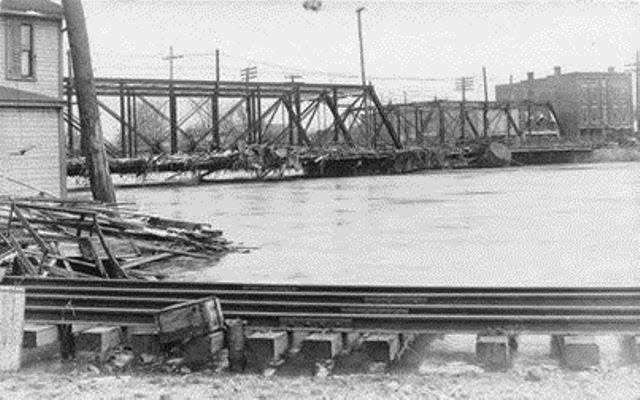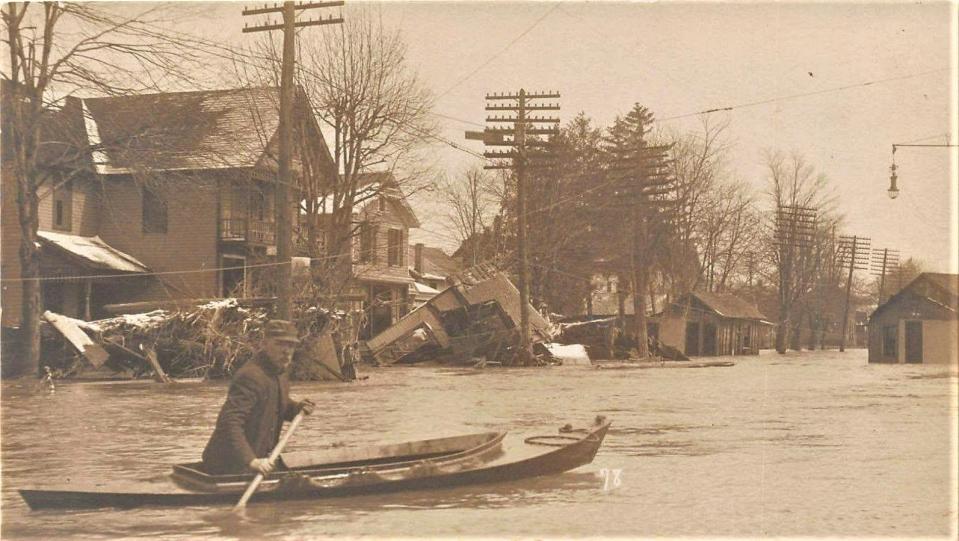Wilhelm: Ohio faced a horrific flood 110 years ago
The terrible tornadoes which roared through the South recently have justifiably captured the headlines and the concerns of Americans, but weather stories this year have included what seems like an endless list of flooding.
With that in mind, it’s worth noting that 110 years ago today, area residents, government leaders and business owners were recovering from what has been called “The greatest flood on record” for Ohio and this area. Scientists have said that the late March flood of 1913 had “an estimated recurrence interval of 1,000 years.”
Statistics that I have read put total flood related deaths at about 650 with more than 400 of those in Ohio, including three in Fremont. The three deaths in Fremont included rescue-worker Isaac Floro who was killed when his rescue boat capsized on Ohio Avenue. Two other rescue workers in the boat managed to survive, but Floro’s body was found in the branches of a tree on Howland Street. The death toll from the flood of 1913 placed it second to the Johnstown (Pennsylvania) flood of 1889 as one of the deadliest floods in the United States. The flood remains Ohio's largest weather disaster.
The force of the flooded Sandusky River caused the south portion of the Ballville Dam to collapse on March 25, well before the river even crested. A few witnesses barely escaped the rushing flood waters.

The flooding was caused by days of heavy rain which eventually raised the flood level 6 feet higher than the highest level that had ever been recorded previously. The downtown area was in deep water and 550 homes were reportedly flooded, including about 50 which were either totally destroyed or uninhabitable.
W.G. Watt, the chairman of the relief committee, said this in an historical booklet published about the flood: “On Tuesday, March 25, 1913, Fremont faced calamity. The entire city was without gas or water. Down its main business street and through a large portion of its residential section rushed a current of furious swiftness; dozens of homes were being swept away; hundreds of people were homeless and hundreds more marooned in their homes surrounded by the angry waters were facing possible death.”

The 1913 was the worst of a string of floods that had struck Fremont during the 19th and 20th centuries. Eventually after a pair of floods in January and February in 1959, with the second affecting about 700 residences and 225 businesses and forcing the evacuation of about 1,650 people, efforts at flood control were increased. Local citizens pushed for controls and in 1962 Congress authorized a flood control project. Two years later funds were appropriated for flood control.
In 1972, the U.S. Army Corps of Engineers completed construction of the floodwall in downtown Fremont as the major part of a project that included channel widening, deepening and straightening and covered 15,000 feet of the river’s length.
Roy Wilhelm started a 40-year career at The News-Messenger in 1965 as a reporter. Now retired, he writes a column for both The News-Messenger and News Herald.
This article originally appeared on Fremont News-Messenger: Worst flood in Fremont history hit city in 1913
